Abstract
After the application of 2.36 Curies per millimole [2,3-3H]gibberellin A20 (GA20) to 21-day-old maize (Zea mays L., hybrid CM7 × CM49) plants, etiolated maize seedlings, or maturing maize cobs, a number of 3H-metabolites were observed. The principal acidic (pH 3.0), ethyl acetate-soluble metabolite was identified as [3H]GA1 on the basis of co-chromatography with standard [3H]GA1 on SiO2 partition, high resolution isocratic elution reverse phase C18 high performance liquid chromatography and gas-liquid chromatography radiocounting. Two other acidic metabolites were identified similarly as [3H]GA8 and C/D ring-rearranged [3H]GA20, although gas-liquid chromatography radiocounting was not performed on these metabolites. Numerous acidic, butanol-soluble (e.g. ethyl acetate-insoluble) metabolites were observed with retention times on C18 high performance liquid chromatography radiocounting similar to those of authentic glucosyl conjugates of GA1 and GA8, or with retention times where conjugates of GA20 would be expected to elute. Conversion to [3H]GA1 was greatest (23% of methanol extractable radioactivity) in 21-day-old maize plants. In etiolated maize seedlings, the C/D ring-rearranged [3H]GA20-like metabolite was the major acidic product, while conversion to [3H]GA1 was low.
Full text
PDF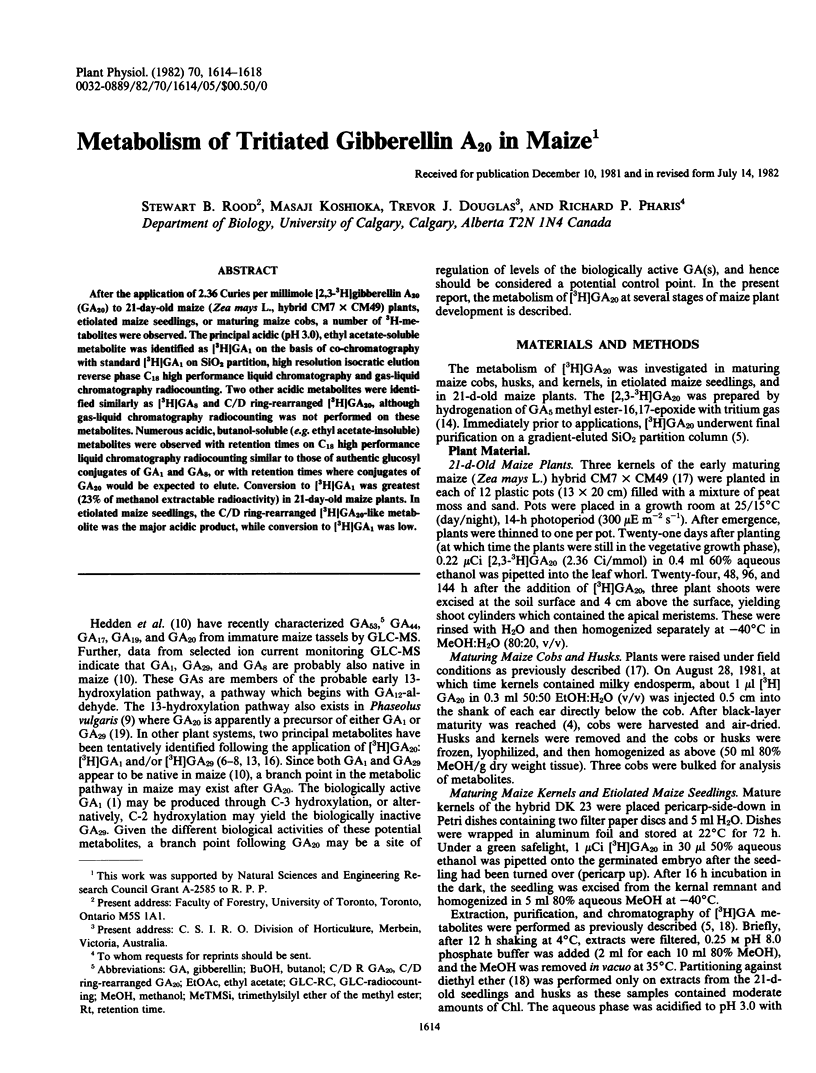
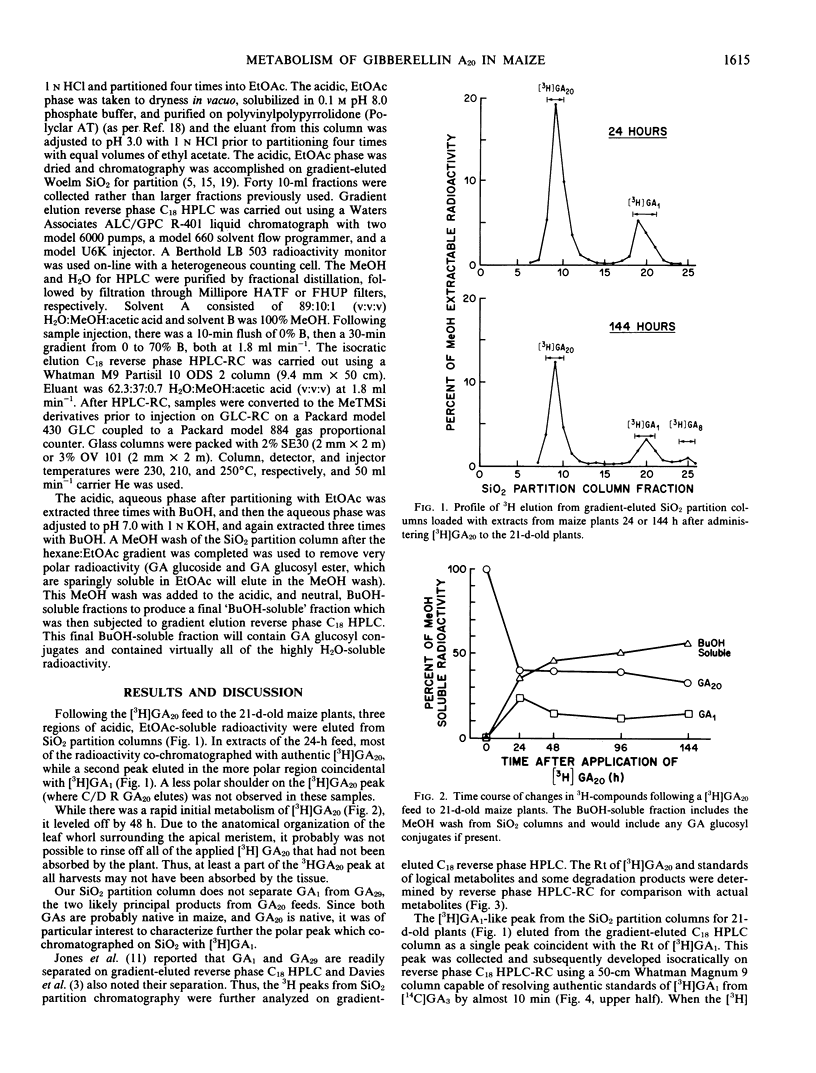
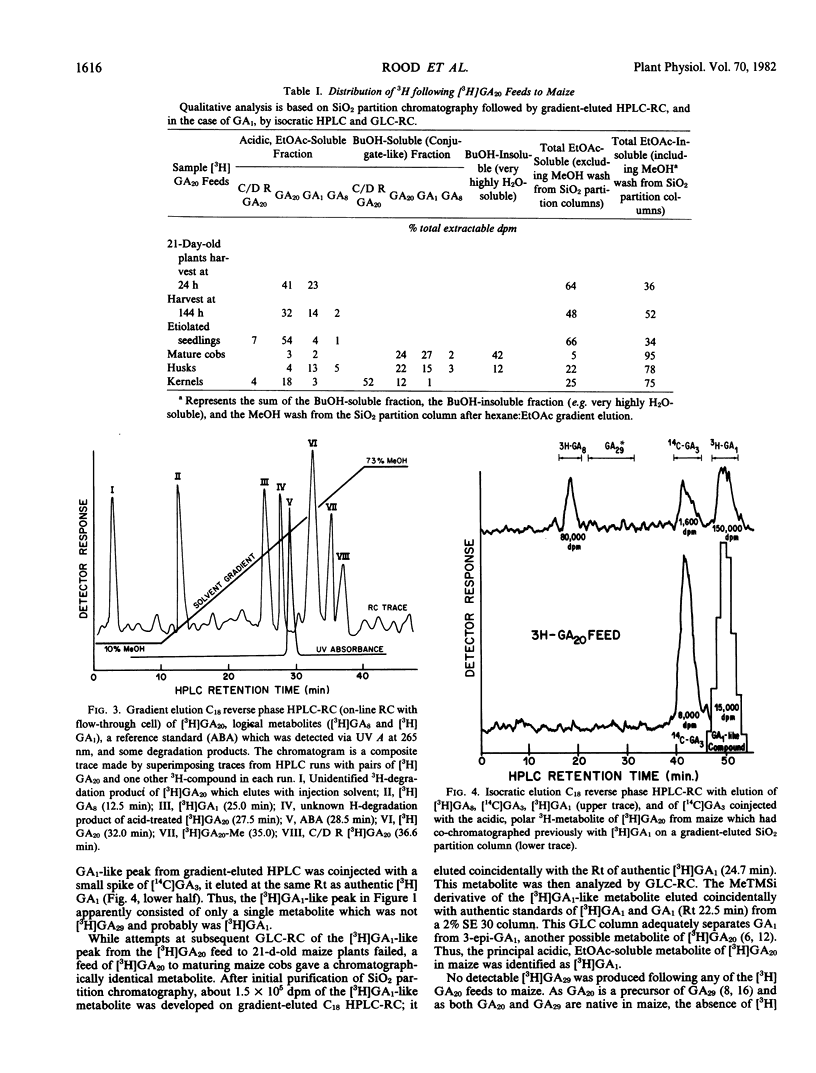
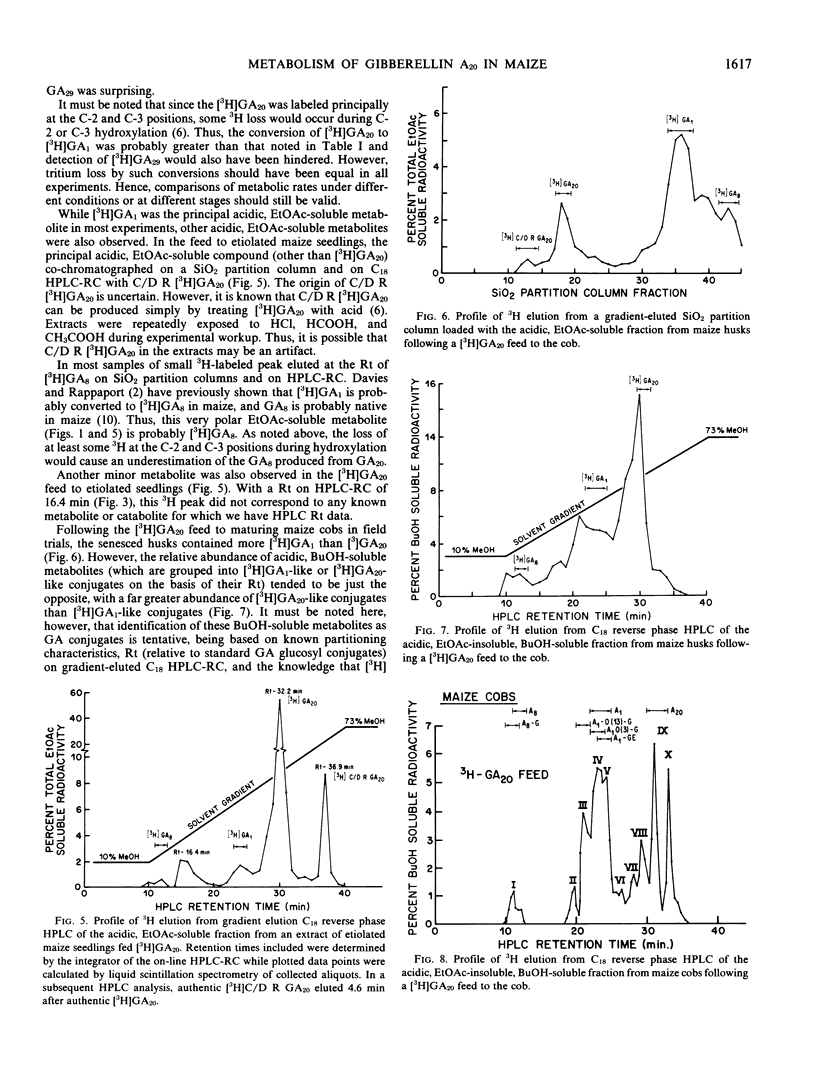
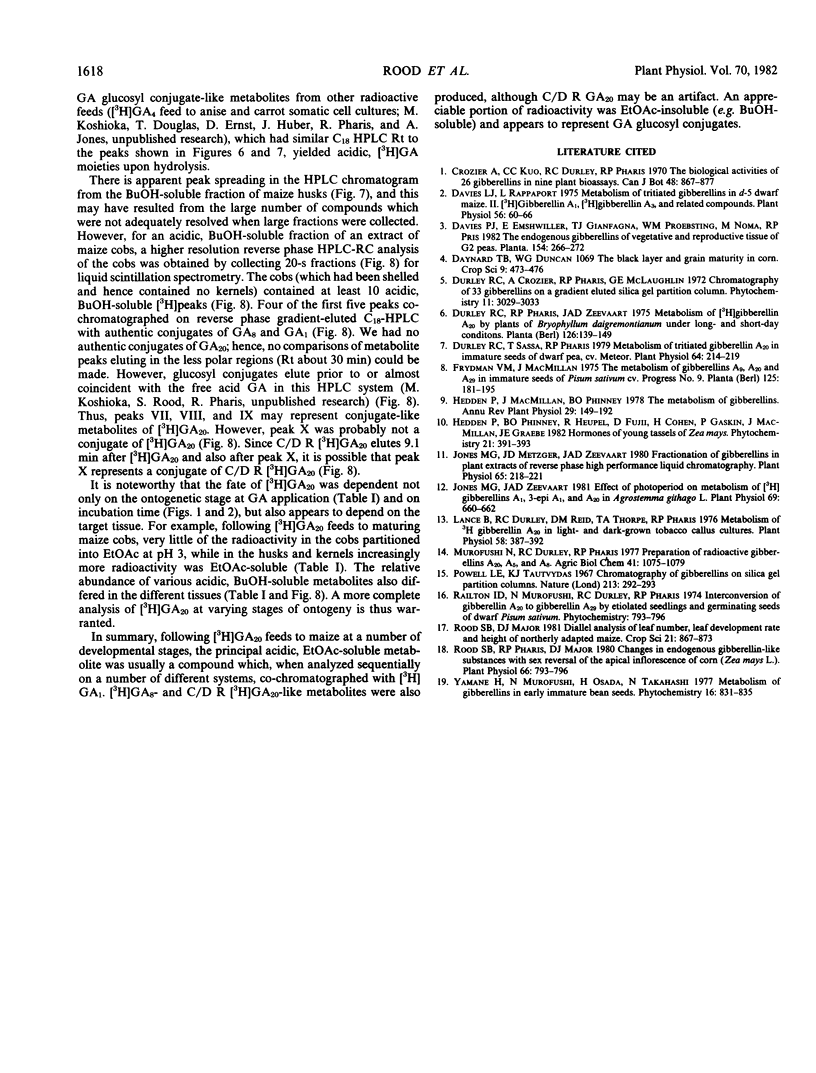
Selected References
These references are in PubMed. This may not be the complete list of references from this article.
- Davies L. J., Rappaport L. Metabolism of Tritiated Gibberellins in d-5 Dward Maize: II. [H]Gibberellin A(1), [H]Gibberellin A(3), and Related Compounds. Plant Physiol. 1975 Jul;56(1):60–66. doi: 10.1104/pp.56.1.60. [DOI] [PMC free article] [PubMed] [Google Scholar]
- Durley R. C., Sassa T., Pharis R. P. Metabolism of Tritiated Gibberellin A(20) in Immature Seeds of Dwarf Pea, cv. Meteor. Plant Physiol. 1979 Aug;64(2):214–219. doi: 10.1104/pp.64.2.214. [DOI] [PMC free article] [PubMed] [Google Scholar]
- Jones M. G., Metzger J. D., Zeevaart J. A. Fractionation of gibberellins in plant extracts by reverse phase high performance liquid chromatography. Plant Physiol. 1980 Feb;65(2):218–221. doi: 10.1104/pp.65.2.218. [DOI] [PMC free article] [PubMed] [Google Scholar]
- Jones M. G., Zeevaart J. A. Effect of Photoperiod on Metabolism of [H] Gibberellins A(1), 3-epi-A(1), and A(20) in Agrostemma githago L. Plant Physiol. 1982 Mar;69(3):660–662. doi: 10.1104/pp.69.3.660. [DOI] [PMC free article] [PubMed] [Google Scholar]
- Lance B., Durley R. C., Reid D. M., Thorpe T. A., Pharis R. P. Metabolism of [H]Gibberellin A(20) in Light- and Dark-grown Tobacco Callus Cultures. Plant Physiol. 1976 Sep;58(3):387–392. doi: 10.1104/pp.58.3.387. [DOI] [PMC free article] [PubMed] [Google Scholar]
- Rood S. B., Pharis R. P. Changes of Endogenous Gibberellin-like Substances with Sex Reversal of the Apical Inflorescence of Corn. Plant Physiol. 1980 Nov;66(5):793–796. doi: 10.1104/pp.66.5.793. [DOI] [PMC free article] [PubMed] [Google Scholar]


